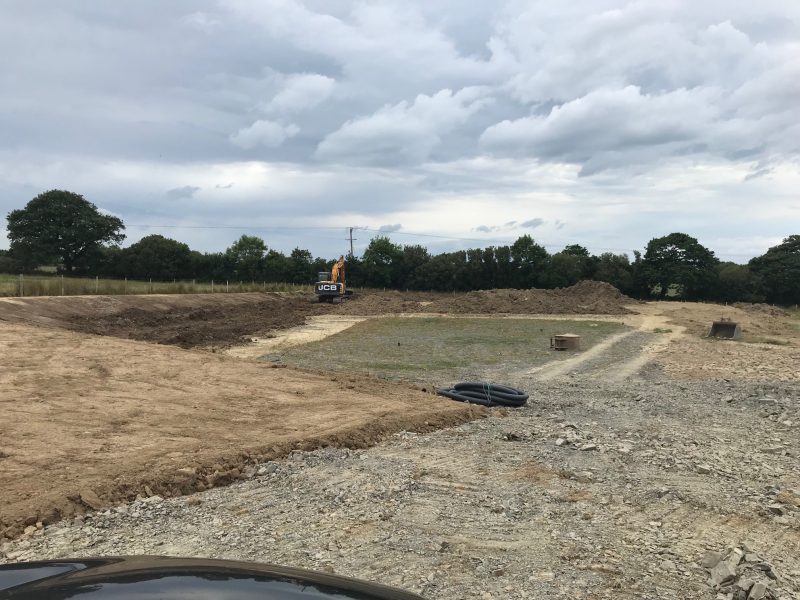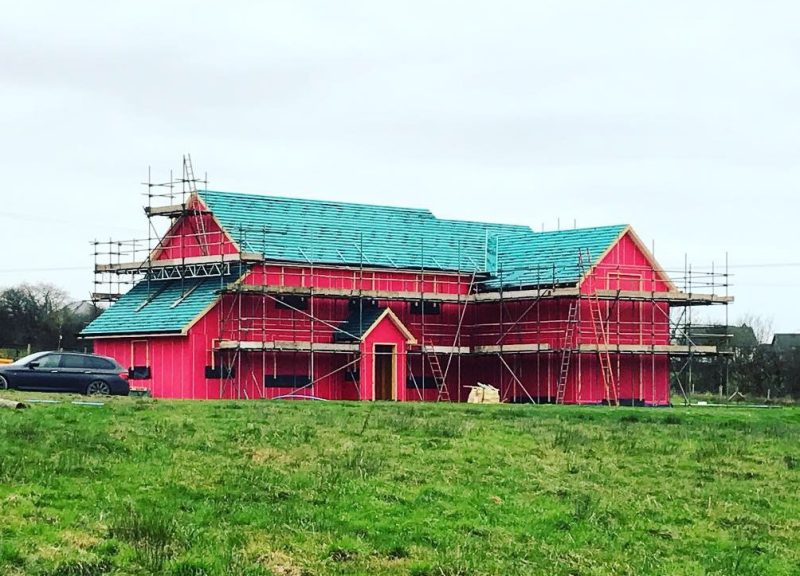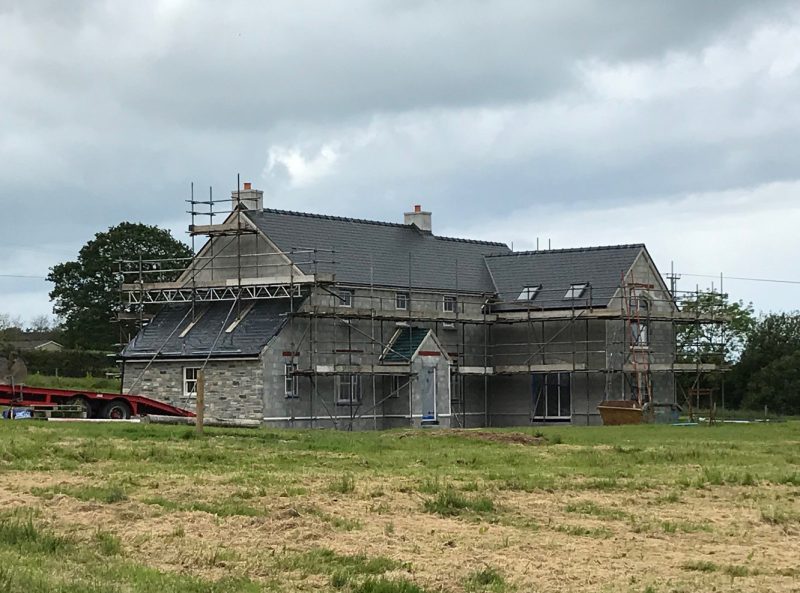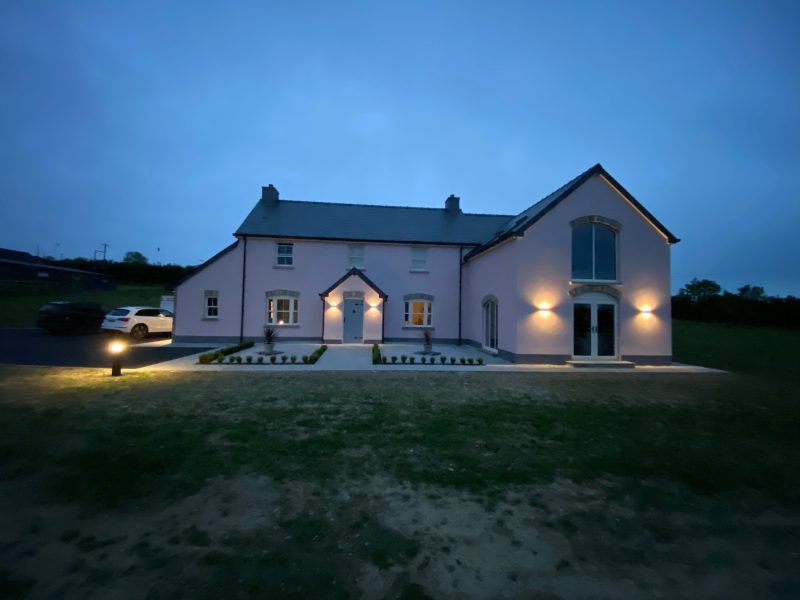Join self build specialists AC Architects to unlock the secrets to self build success on its monthly Self-Build Hour webinar series.
For 15 years AC Architects has been helping self builders realise their dream, and, for the webinars, it has a pool of experienced employees and associates ready to share their knowledge each month, supported with a Q&A session.
Each month a self build expert will be live via Microsoft Teams at 1 pm on the second Thursday of every month, starting this November, dealing with a range of topics, such as:
Sign up to hear about each monthly webinar on AC Architects’ website.
Jason Orme is the Editorial Director of Homebuilding & Renovating Magazine, with two decades of experience in self building and renovations, who started his own self build journey at 28 and has since worked on several homes. If your keen to find out more about self building, join Jason for an insider’s guide, including the key steps, choices and pros and cons.
Upcoming topics:
As well as designing and supporting the delivery of homes, AC Architects is committed to educating people about the choices involved in self building, including via its popular blog.
ACA is also involved with in-person seminars at the National Self Build and Renovation Centre (NSBRC) in Swindon and a range of self build shows throughout the year, as well as having offices in Dunfermline and at the NSBRC.
Swansea Building Society has been helping people get on the housing ladder since 1923 with a considerable number of years operating in the self build market.
We caught up with Richard Miles, the Society’s Head of Savings & Marketing / Area Manager (East Region), who explained why building societies are such major players in self builds, and why the personal touch can make a difference to your own self build journey.
When it comes to financing a self build nearly everyone will need some form of finance, explains Richard, with most needing to take a self build mortgage. This is different from a conventional mortgage as the lender typically lends in stages (see below), corresponding with build phases. To acknowledge the greater risk in comparison to a conventional mortgage, the fees and interest rates tend to be higher.
However, on completion the self build mortgage can usually be transferred to a conventional product, so it gets your house built and then you move on to a standard mortgage product.
Some mortgages will finance the land purchase, while some people may have savings to start the process, and need the self build mortgage to follow through to completion.
The nature of a self build mortgage also means that you will have more of a relationship with your lender for the duration of the build. This can build trust, which is where building societies like the Swansea have an edge.
Building societies come out on top for many self builders as they tend to be more local in their approach, often with people, rather than a computer, underwriting a project, and making local visits.
This means they understand exactly what you are planning, rather than a ‘computer says no’ scenario. Self building often fits well with building societies’ core values of helping people with home ownership, rather than purely focusing on profits.
Having a good relationship with your lender can be transformative in terms of not only securing your lending, but also your experience during your build. A personal relationship with your lender can make site inspections easier and keep communication channels open.
For example, at Swansea Building Society we lend on self build projects in Wales and the Welsh borders (and the rest of England on a case by case basis), but we like to ensure that our self build clients are close enough that we can make personal site visits if needed.
This helps build trust and understanding when the unexpected occurs or on a complicated project, explains Richard.
Typical fund release stages for a stand alone self build might be:
To obtain a self build mortgage, you need to be aware of your expected costs and have your plans ready to discuss your project.
You must also have an understanding about the reality of your planning situation with full planning permission in place at time of the mortgage application. And of course you need to factor in a contingency fund, which should be a minimum 10%, but we would suggest at least 15-20% in these uncertain times with fluctuating material and labour prices.
When choosing a lender you also need to consider whether you need an arrears or advance stage payment product. For those with some cash to invest, an arrears product may offer a better interest rate as it pays after the completion of each phase. On the other hand, an advance product pays before each phase to allow you to build, but there are fewer lenders operating in the market offering this.
For more insight about finance and VAT visit our How to Build section




Here’s what one self builder said about why her choice of Swansea Building Society was the right one for her (see the images of her home):
“The advice and support given by Sioned Jones, Area Manager at the Carmarthen Branch, was comforting and made the whole process an easy step-by-step route to being able to build our home. The flexibility of their lending criteria and rates puts them at the top of the list when it comes to wanting to move forward with buying a plot and developing. You remain in charge of the project with Sioned and her team there to support you at any time you need.
“The application process is relatively short and hassle free. Swansea BS has experienced valuers who visit the property before and during construction at key stages to release funds within days. The trust between everyone involved from start to finish cannot be underestimated. We would happily recommend them to anyone and everyone!
Many self builders make the mistake of thinking about their landscaping at the end or their project, rather than planning for it as part of their build. But this often results in it not being budgeted for. Self builders easily overspend on their journey, sometimes due to the unexpected, but sometimes as they upgrade elements or choose renewables that require upfront investment.
The result can be that landscaping can be an afterthought, but why let your build down when you’ve invested so much money and time to create your perfect home? Plus, your planning permission may include a reference to the completion of landscaping too.
Planning early will ensure you have a ring-fenced budget for landscaping and can also ensure that any heavy lifting or tree planting can be done while you’ve the right machinery on site.
We caught up with NaCSBA member Arbour Landscape Solutions, which has in-depth knowledge as a trade landscaping supply company with more than 60 years in the industry.
Richard Bickler, MD of Arbour, filled us in with this guide to getting started with garden surfaces, as he explains:
Hiring a garden designer is always the most efficient way to get the garden you want, and they will be able to advise on the right garden surfaces for you. But on a self build where all costs are carefully monitored this might be beyond your budget.
However, when it comes to purchasing materials, self builders can register as customers on Arbour’s site, which gives you the advantage of being able to buy landscaping materials at wholesale prices.
When it comes to garden surfaces the preparation of the ground is vital on a building plot, where compression, rubble and contaminants can all be an issue. Time spent managing and preparing the ground – and looking after it during a build – will be well worth the effort.
It helps to keep a tidy site and ensure trades are clearing up after them and that skips are used for waste that cannot be reused on site.
Many selfbuilds are knock-down-and-build opportunities, and planning can often require materials to be reused as much as possible on site. In which case consider crushed brick or concrete to create sub-levels for surfaces, but these need to be the appropriate size and properly compressed – so always seek professional advice if this is what you plan to use these materials for.
One final consideration is that architects on high-end houses love taking an internal material outside via level thresholds, so a stone floor flows straight onto a terrace to create a seamless look.
This needs careful specifying in terms of levels and drains, as well as the type of stone, so again get professional advice if this is a detail you are hoping to achieve.
Check out Arbour Landscape Solutions’ guide to materials:
The instant appeal of a turf lawn, or the more economical seeded lawn, is a great solution for large areas. It is economical, quick and easy to work with, and can be easily removed for landscaping projects that are planned for the future when money has eased post build.
Ground care is important, as is levelling, and you can choose from different grass mixes to improve biodiversity, create interest or manage tricky areas, such as more shade tolerant plants. Shady or small areas can be hard to maintain for a lawn, so again choose the right product for the location.
Beloved by all, natural stone can often be reasonably locally sourced and makes a garden bed in with its landscaping relatively easily. Stone comes in a range of colours and textures, from inky-black slate to buff sandstone.
If you’re building with sustainability in mind consider where your stone is coming from, and also consider the finish. Highly polished stone can be slippery when wet, so may not be practical on steps or by pools.
Porcelain is one of the most flexible materials in terms of finish, as it offers colours, textures and patterns not available in other garden materials (see main picture). Stain resistant, stylish and durable, it creates a sharp look that works brilliantly in modern gardens.
Specifying is important – external porcelain should be winter-hardy by default if sold in the UK, and you can specify textured or matt finishes for extra grip.
There’s a lot to choose from so do your research, and think about how it will be used. On steps it can have hard edges that can be chipped, so consider the final design and use of the space.
Much is imported from abroad, so when researching ask about availability and lead times for orders – and ensure you order sufficient, with extras, so you have spares in case a line is discontinued or some are damaged during storage.
Gravel can be used beyond the drive to create interest and an easy-to-maintain surface for your garden, ideal if you’re future proofing your home. Used with membranes you can still plant in it and keep weeds to a minimum, and it is ideal for sloping, exposed or high-traffic areas where a lawn would struggle.
Plus its permeable, meaning more water is absorbed across the garden, unlike with solid pavers or porcelain.
For paths or seating areas you can opt for self-binding gravel, which can be compacted to make a more resilient surface, but it won’t stand up to car tyres.
Whether you choose timber or composite, decking remains a popular choice for patios. Composite is available in range of colours and is very low-maintenance, and is often made from, or partially from, recycled materials.
If a natural material is more important, only use FSC certified timber and opt for good quality preservatives or pressure treated wood, but be aware that these are chemical processes. Also, if you’re considering hardwood decking do your due diligence about where these are sourced from and if it is sustainably sourced.
For more self build tips on landscaping visit Arbour’s blog or case studies
Images: Gravel Tapestry Landscape Designs; Millboard decking by Grow Gardens